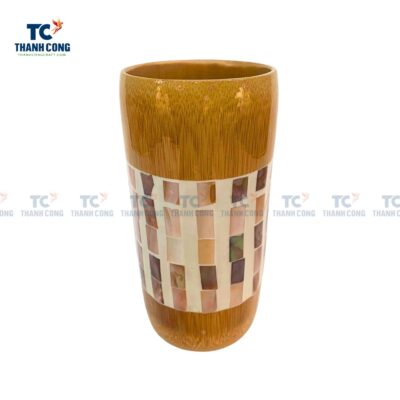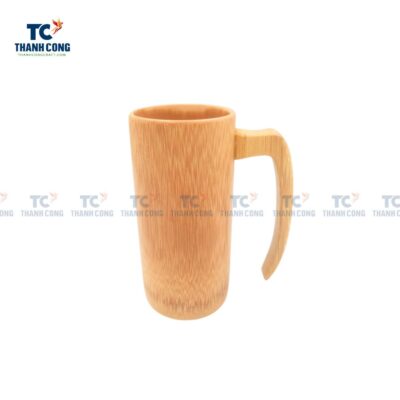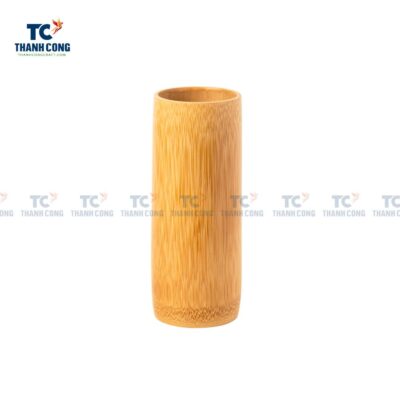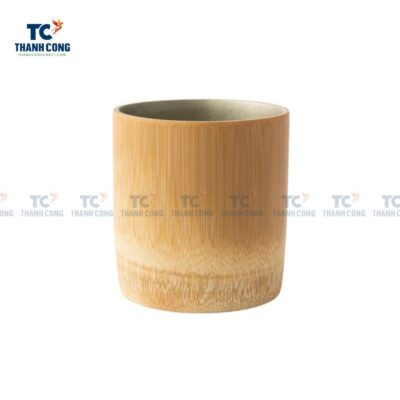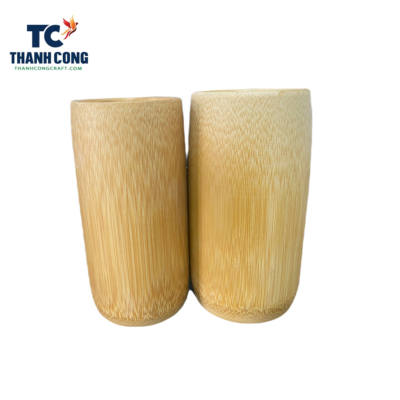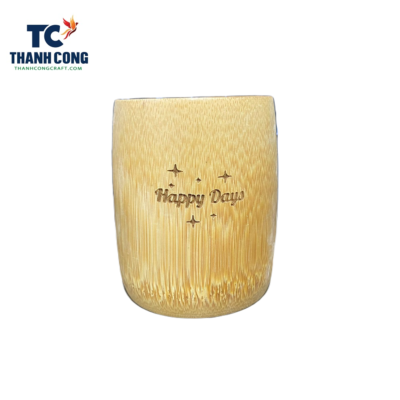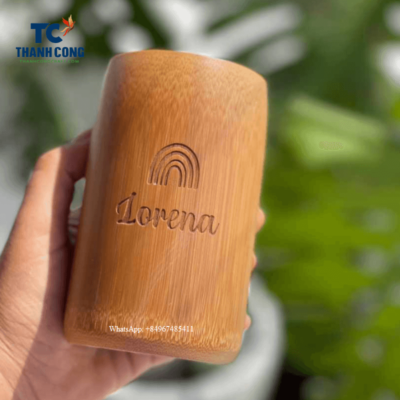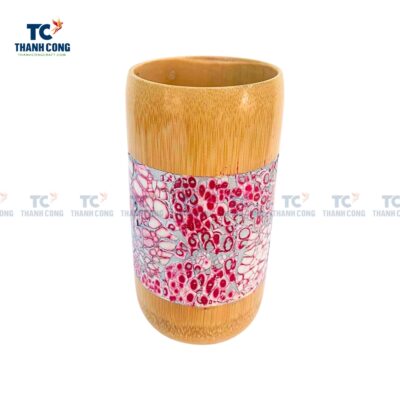Bamboo is a type of plant with a soft, durable and easy to process stem that can be made into many different products. One of the simple and useful products from bamboo is a cup.
Bamboo cups are not only environmentally friendly, but also have many advantages such as light, heat-resistant and beautiful. In this article, we will guide you on how to make bamboo cups (bamboo mugs, bamboo glasses) from simple materials and tools.
Contents [hide]
1. How to make bamboo cups step by step?
Bamboo is a type of plant with a soft, durable, and easily processed stem that can be crafted into various products. One simple yet practical item made from bamboo is a cup. A bamboo cup serves various purposes, such as for drinking water, tea, coffee, or even as a decorative piece.
To create a bamboo cup or bamboo mug, gather the following materials and tools:
- A piece of bamboo with a diameter of about 8-10 cm and a length of about 15-20 cm.
- A paper cutter or a wood cutter.
- A drill or a rivet.
- Sandpaper or a grinder.
- Paint or wood preservative oil.
Once you have all the necessary materials and tools, follow these steps to make a bamboo cup:
Step 1
Cut the bamboo piece into two halves lengthwise. Select one half with a beautiful and intact outer shell. Trim the head and tail of the bamboo to form a cylinder with the desired height.
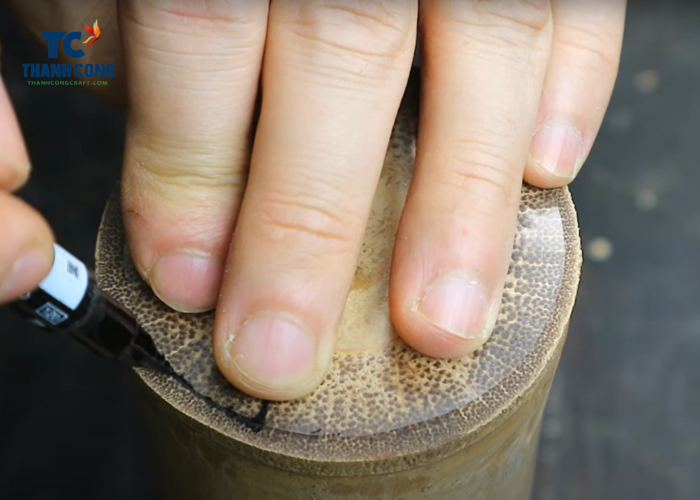
Step 2
Drill or hammer a rivet into the bottom of the cylinder to create a hole between the layers of wood. This hole aids in air circulation, preventing mold or cracking during use.
Step 3
Use a paper cutter or wood cutter to scrape off the inner shell of the cylinder until you reveal the bright and smooth layer of wood.

Step 4
Employ sandpaper or a grinder to smooth the edges and surface of the cylinder. Customize the surface with patterns or writings according to your preference.
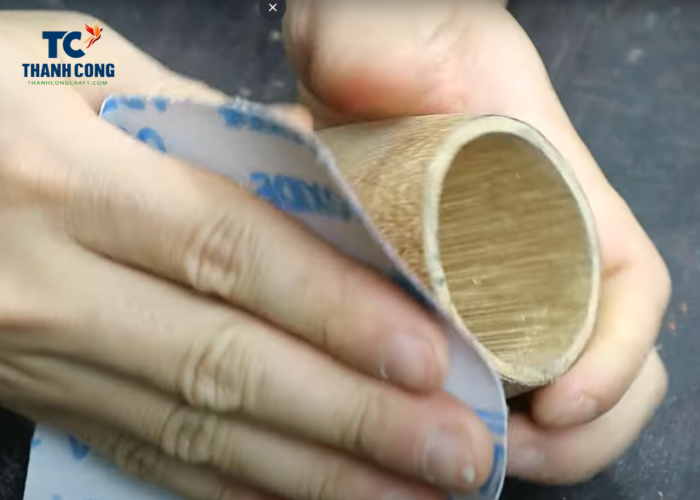
Step 5
Apply paint or wood preservative oil to coat the surface of the cylinder. Allow the cup to dry completely before use.
2. FAQs
2.1 How long does a bamboo cup last?
The lifespan of a bamboo cup depends on many factors, such as the quality of the bamboo, the manufacturing process, the storage method and the usage. According to some sources, a bamboo cup can last from 2 to 5 years if properly cared for.
To increase the durability of the bamboo cup, you should wash it with warm water and soap after each use, let it dry completely before storing and avoid exposing it to high temperatures or direct sunlight. You should also avoid using the bamboo cup for drinks with high acidity, such as orange juice or lemon juice, as they can damage the inner coating of the cup.
If you notice any cracks, breaks or mold on the bamboo cup, you should discard it and replace it with a new one
2.2 Is it safe to drink water from bamboo cup?
Yes, it is generally safe to drink water from a bamboo cup when certain conditions are met. Ensure that the bamboo cup is crafted with high-quality workmanship, providing a smooth and finished interior to prevent any potential harm.
Some bamboo cups may come with protective coatings, such as food-grade sealants or wood preservative oil, so it’s important to verify that these coatings are safe for food contact. Regular cleaning with mild soap and warm water, along with thorough air-drying between uses, helps prevent the growth of mold or bacteria.
Avoid using harsh chemicals or abrasive materials on the cup to maintain its safety and structural integrity.
2.3 What are the cons of bamboo cups?
While bamboo cups offer various benefits, it’s essential to consider potential drawbacks:
- Bamboo cups can crack or mold if not stored properly. This can affect the quality and hygiene of the cups.
- Bamboo cups can be affected by high or low temperatures. If you drink too hot or cold water, the bamboo cups can deform or crack.
- Bamboo cups may not be suitable for some types of drinks, such as coffee, tea, juice or alcohol. This can change the taste or color of the drink, or cause a chemical reaction with the bamboo cup.
2.4 Can you wash bamboo cups?
A bamboo cup stands out as an environmentally friendly and durable choice for kitchen utensils. However, to ensure their longevity and cleanliness, it’s crucial to follow proper washing techniques. Here are some helpful tips:
- Avoid Prolonged Soaking: Refrain from soaking bamboo cups in water for extended periods, as this may lead to molding or cracking. Instead, wash them promptly after use and dry with a soft cloth.
- Hand Wash Only: Bamboo cups are not suitable for dishwashers, as the high temperature and chemicals can potentially damage them. Opt for hand washing with warm water and mild soap to preserve their integrity.
- Gentle Cleaning: Do not use a hard scrubber or strong detergent, as these may scratch or compromise the natural coating of the cups. Employ a soft scrubber or a small brush to gently remove any stains.
- Deodorize and Brighten: If the cups develop an unpleasant odor or yellowing, you can use white vinegar or lemon for deodorizing and brightening. Simply soak a piece of cloth in vinegar or lemon juice and gently wipe the surface.
2.5 Can I put bamboo cup in microwave?
It is generally not recommended to put bamboo cups in the microwave. Bamboo is a natural material, and the microwave’s intense heat can cause the cup to dry out, become brittle, or even crack. Additionally, if the bamboo cup has any protective coatings or finishes, the microwave’s heat may compromise these layers.
To avoid potential damage, it’s advisable to choose alternative containers made of microwave-safe materials for heating beverages or food in the microwave. If you are uncertain about the suitability of your bamboo cup for microwave use, check the manufacturer’s guidelines or opt for a different heat-resistant.
The article above is about “how to make bamboo cups” that you can refer to to follow the 5 steps mentioned. If you have any further questions, don’t hesitate to send thanhcongcraft an email us at info@thanhcongcraft.com or message us at WhatsApp: +84967485411. We are always willing to assist you!


